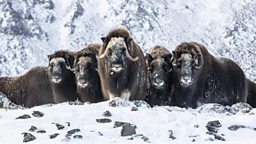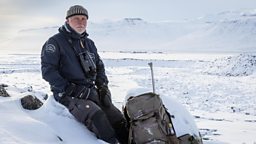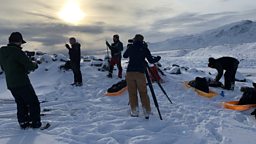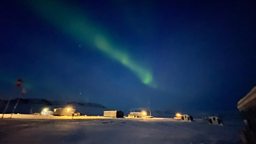Filming muskoxen in Arctic Greenland isn't easy

There are a zillion reasons to film Muskoxen in Greenland and one reason not to…it’s really tricky.
Muskoxen are insanely wonderful creatures
Muskoxen are insanely wonderful creatures, they thrive in the unimaginable cold of the Arctic, they are more closely related to sheep then cows, and they look like animated carpets.
Prof. Niels Schmidt uses muskoxen as hairy arctic spies. The winters are long and dark in Greenland and so we really don’t know what happens there for almost half of the year, but new high-tech tracking camera collars allow the team to collect data that shows us at least some of what is happening out there in the frozen darkness.

The team are also installing vaginal sensors to monitor births and sampling wool for evidence of what the oxen are eating.
All of this made the opportunity to film with Niels and the muskoxen irresistible, but the logistics almost broke the production team.
...if you forget anything there is no plan B
We needed a lot of specialist kit, but we had to adhere to very strict weight limits on the research plane. This plane lands on a frozen airstrip near the Zackenberg Research Centre in the middle of nowhere so if you forget anything there is no plan B.
In the final days the team were trying to shave off weight by swapping out kit and sacrificing comforts - although the vegan hot chocolate still managed to make it in onboard which made everyone happy.
Besides the risk of cold and being speared by a grumpy muskox, the biggest threat was polar bears and at least one of the camera crew had to have weapons training just in case.
If there was a medical emergency at night the team would be on their own until the sun came up. Travel at base was always on foot, often pulling sledges of equipment so, although a medical kit was essential we had to keep it light. A plan was made to share equipment with the muskoxen and the team tried to figure out if the oxygen masks used for the sedated muskoxen would fit a human: They do and so that was one less thing to pack.

Backpacks laden with drones, dragging sledges weighed down with camera kit and gizmos, and wrapped up in layer after layer against the cold, the team spent hours each day tracking the muskoxen only to see them kick up their heels and vanish over a hill. Muskoxen are great at navigating steep terrain in deep snow, our crew are less adept.
Muskoxen are great at navigating steep terrain in deep snow, our crew are less adept
Then having successfully darted and released a beautiful female the herd got spooked. Their poor eyesight and long fringes meant they couldn’t see what was what and, mistaking the crew for the rest of the herd, they chased after them in hot pursuit. The crew understandably did a runner…there isn’t much to hide behind in the arctic tundra. The camera operator refused to drop the camera but, ‘vocally encouraged’ by the director he was motivated to climb a nearby bridge and all of them leapt to safety. Sadly, there is no footage of this daring escape.
After miles of trudging, lots of hot chocolate, some sensational northern light displays and two successfully collared females, the crew turned their heads for home.

And if you want to know if a muskox really smells musky then Chris Packham has the answer – he gave one a really good sniff test on our behalf.
See for yourself on Sunday 16th April when Our Changing Planet goes out on 麻豆官网首页入口 One and iPlayer.
